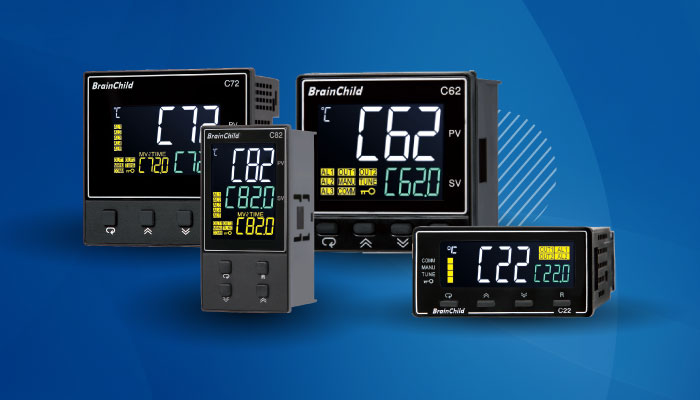Integrating Paperless Data Recorders with Existing Systems: Best Practices

As industries move toward digital solutions, integrating paperless data recorders with legacy systems or existing equipment is essential for improving data accuracy, efficiency, and compliance. Transitioning from paper-based methods to paperless systems does not mean overhauling your entire infrastructure. By following best practices, you can ensure a smooth integration and maximize the benefits of digital data logging without disrupting your operations.
Assess Current Infrastructure and Identify Integration Points
Before implementing a paperless data recorder, evaluate your existing systems and understand how the new technology will interact with them. Start by:
- Inventorying Your Systems: Identify the equipment, sensors, and controllers you currently use (PLCs, SCADA, DCS, etc.).
- Understanding Data Flow: Map out how data is currently collected, stored, and transmitted. This will help you figure out where and how the new system will plug in.
- Evaluating Compatibility: Ensure the paperless recorder is compatible with your legacy systems and supports common communication protocols (Modbus, OPC, etc.).
Choose a Paperless Data Recorder with Flexible Connectivity
For successful integration, select a recorder that supports various communication protocols, allowing it to interface with existing systems:
- Multi-Protocol Support: Look for recorders that support a range of industrial protocols such as Modbus, OPC, or Ethernet/IP to ensure compatibility with your legacy devices.
- Universal Inputs: Ensure the recorder can handle multiple types of inputs, like analog, digital, RTD, or thermocouple signals, making it versatile enough for your existing equipment.
- Cloud and IoT Integration: If you are aiming for remote monitoring or cloud-based storage, select a system that can seamlessly integrate with cloud platforms for real-time data access and analytics.
Plan for Data Migration and Synchronization
Migrating data and synchronizing it between legacy systems and new digital recorders is crucial:
- Data Migration: If you need to transfer historical data, plan for how this will happen. A protocol converter or middleware may be necessary for transferring legacy data into the new system.
- Real-Time Synchronization: Ensure your paperless recorder collects and synchronizes data from legacy systems in real-time. If your existing equipment is not capable of real-time communication, a protocol gateway or interface might be required.
Integrate Existing Software and Platforms
Many businesses already use software for monitoring, analysis, or reporting. When integrating paperless data recorders, make sure the system connects smoothly with your existing tools:
- Software Compatibility: Check if the paperless recorder can integrate with your existing software such as SCADA, MES, ERP, or other data management systems.
- Data Export and Interfacing: Ensure that the paperless recorder supports data export in common formats (CSV, Excel, SQL) for easy import into your existing reporting or analysis tools.
Establish a Unified Data Management System
Paperless systems can centralize data management, but to maximize this benefit, ensure that all your systems work together:
- Centralized Dashboard: Integrate your paperless recorder with a centralized dashboard or data monitoring platform for real-time visibility and control across all systems.
- Standardized Data Format: To avoid discrepancies, standardize the format and units of measurement across systems, ensuring that all data flows seamlessly into your reports or analytics tools.
Ensure Compliance and Data Security
Industries like pharmaceuticals and food manufacturing have strict regulatory requirements. When integrating paperless data recorders, it is crucial to meet these standards:
- Data Integrity and Security: The recorder should have built-in features like audit trails, timestamping, user authentication, and secure data storage to ensure compliance with regulations.
- Backup and Redundancy: Implement a reliable backup system to prevent data loss. Ensure the recorder supports data encryption and secure cloud storage for disaster recovery.
- Validation and Calibration: If your legacy systems require regular calibration or validation, make sure the paperless recorder offers these features or can integrate with calibration systems.
Test the Integration
Before full deployment, thorough testing is essential:
- Pilot Testing: Conduct a pilot run to verify that the paperless recorder is collecting, transmitting, and storing data correctly. Ensure all systems are synchronized and communicate effectively.
- Performance Testing: Test the system under operational conditions to check for delays or errors. Verify that the recorder can handle the required data load without latency or crashes.
- Troubleshooting: Identify and resolve any issues during testing, including communication errors, data formatting issues, or compatibility glitches.
Train Staff on the New System
Effective training is essential to ensure a smooth transition:
- System Overview: Train staff on how the new paperless recorder works and how it integrates with existing systems.
- User Training: Provide hands-on training for operators, engineers, and IT staff to ensure they are comfortable using the new system and troubleshooting minor issues.
- Compliance and Security Training: Ensure all relevant personnel understand the importance of data security, integrity, and compliance features in the paperless system.
Monitor and Optimize
After full deployment, continuous monitoring and optimization are necessary for long-term success:
- Monitor Performance: Regularly monitor system performance, data integrity, and uptime to identify any issues early.
- Optimize Processes: Gather feedback from staff and make adjustments to improve workflows, performance, and user experience.
- Software and Hardware Maintenance: Stay up-to-date with software updates, security patches, and hardware maintenance to ensure your system remains reliable.
Conclusion
With careful planning, the right tools, and a clear understanding of how your legacy systems work, you can ensure a smooth transition to digital data logging. By following best practices in connectivity, data migration, compliance, and testing, you can enhance operational efficiency, improve compliance, and eliminate paper-based inefficiencies.
At Theta Controls, we specialize in providing seamless integration solutions for your data logging and monitoring needs. Our range of paperless data recorders, combined with our expertise in system integration, ensures that your business can transition to a more efficient, secure, and compliant digital environment. Contact us today to learn how we can help streamline your operations and integrate the latest in data recording technology!


